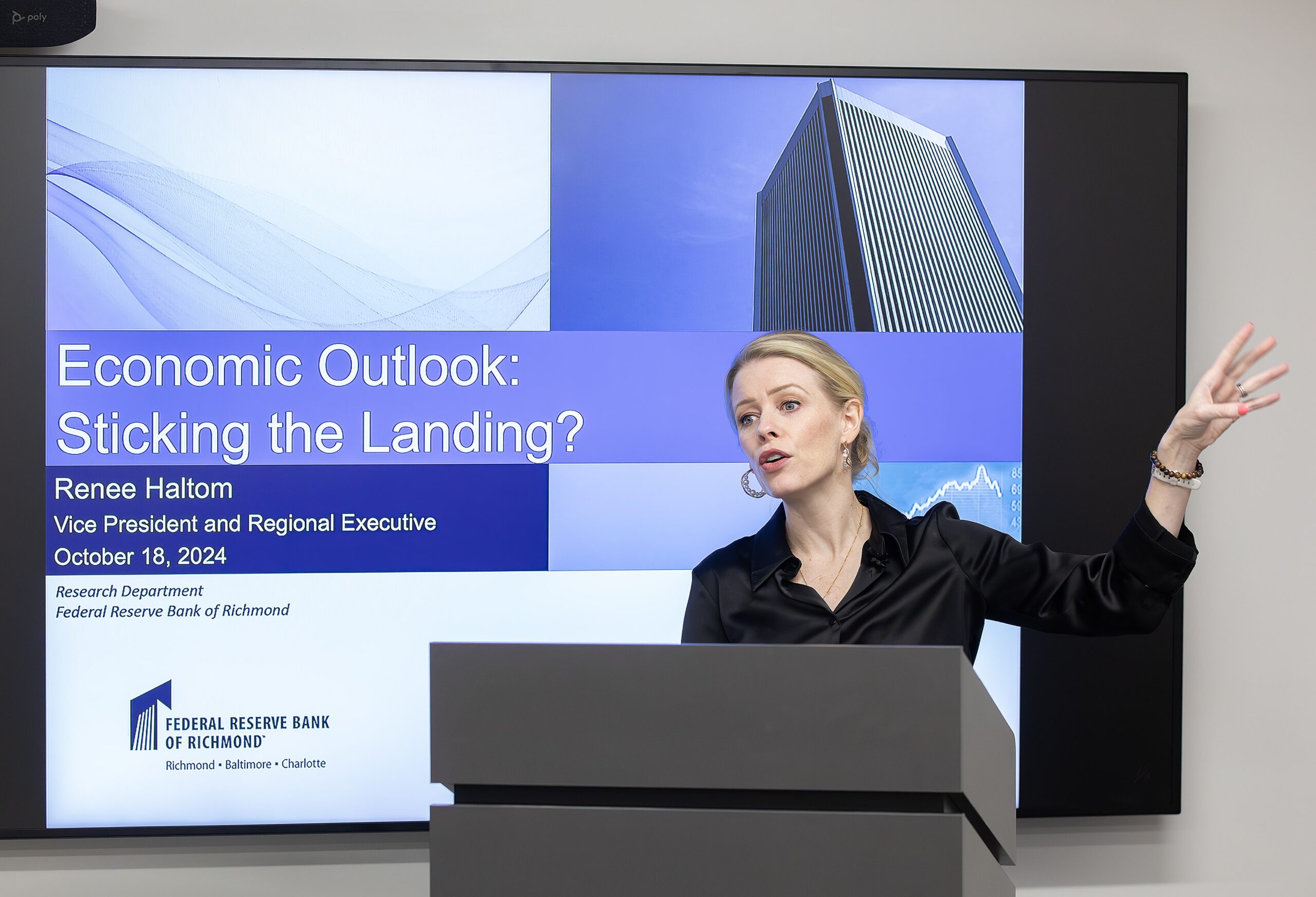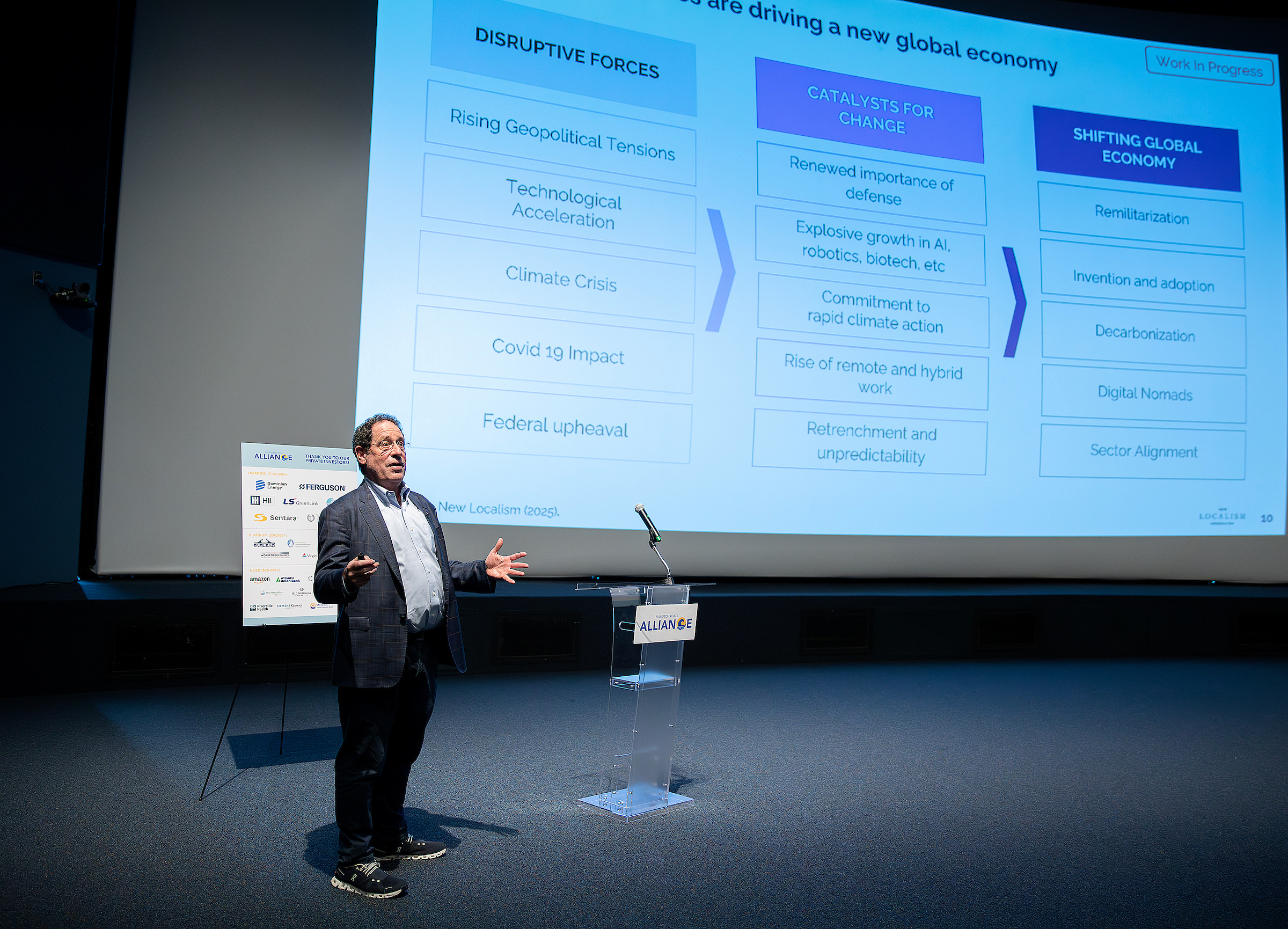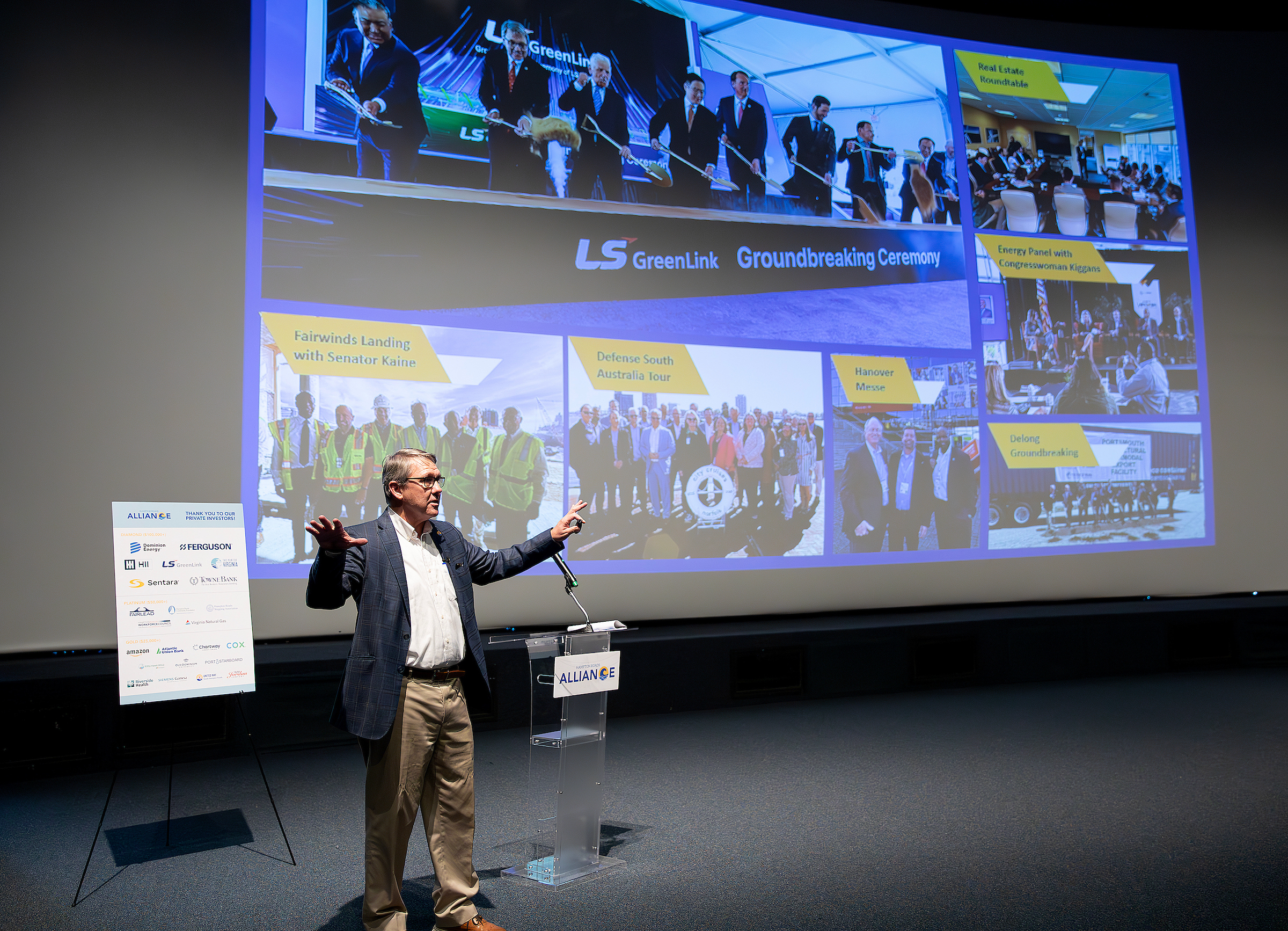Wondering about national economic trends? Lingering uncertainties? The Federal Reserve’s approach to guiding a balanced recovery?
Renee Haltom, Vice President and Regional Executive at the Federal Reserve Bank of Richmond, led an insightful economic forecast discussion for the Hampton Roads Alliance on just that.
Read on for some of the highlights from her recent “Economic Outlook: Sticking the Landing?” presentation.
The State of the Economy
The post-pandemic economic landscape has been characterized by a surge in consumer demand that outpaced supply, fueling inflation, she said.
Over the past two years, the Federal Reserve has aggressively raised interest rates to curb inflation, resulting in a slowing economy. However, rather than triggering a recession as some had feared, these efforts contributed to a more stable and sustainable pace of growth. Haltom described the current climate as a “balance of risks,” where inflation is easing while the labor market remains strong.
“I don’t see a significant weakening of the labor market, at least in terms of the signals we have so far,” Haltom noted.
Labor Market Resilience
Despite economic pressures, the labor market continues to outperform expectations, with job growth outpacing population increases. Businesses remain cautious about hiring but are equally hesitant to downsize, having experienced significant hiring challenges in the post-pandemic period.
Certain industries, particularly leisure and hospitality, are still recovering from pandemic-related downturns. Haltom pointed to the hospitality sector’s gradual return to pre-pandemic employment levels, saying “hospitality is a sector that automated a ton, and now it is beginning to catch up to where it was in employment. Hotels are finally able to get applicants, hire staff and operate at full capacity again.”
Consumer Behavior and Inflation
Consumer spending remains a primary driver of economic activity, though at a moderated pace. Haltom highlighted a shift in consumer behavior toward prioritizing affordability, a trend she referred to as “soft landing behavior”—a positive sign for inflation control.
Two key inflationary components remain under scrutiny:
- Wages – which have seen substantial increases
- Housing costs – largely driven by a persistent supply shortage
Haltom stressed the need for greater housing supply to improve affordability and support workforce retention.
Key Challenges and Future Trends
Looking ahead, Haltom outlined the major uncertainties shaping the economic landscape, including:
- Geopolitical tensions
- The lagging effects of monetary policy changes
The Federal Reserve remains data-driven, closely monitoring economic indicators before adjusting interest rates.
“Most recessions come from random shocks in the economy, not from an action by the Fed,” Haltom said as a reminder that economic downturns often stem from unforeseen shocks rather than direct Fed actions.
For those wondering about the potential for interest rate cuts, Haltom suggested that returning to near-zero rates was unlikely. However, “if economic data continues to show strength—stubborn inflation and a steady labor market—rate cuts may be delayed. But if layoffs increase and economic conditions weaken, rate cuts could come sooner.”
Implications for Hampton Roads
For the Hampton Roads region, government employment, transportation and warehousing remain vital economic drivers. Haltom emphasized that changing consumer preferences and structural shifts in industries such as manufacturing and construction will shape future opportunities and challenges for regional economic developers.
One lingering puzzle is the slow recovery of retail employment in Virginia.
“Retail trade in Virginia is still below pre-COVID employment levels, and we don’t yet have a clear explanation for why,” Haltom noted.
Looking Ahead
Haltom provided a nuanced and data-driven perspective on the U.S. economy’s trajectory, underscoring resilience, adaptability and strategic planning as key themes.
As Hampton Roads navigates an evolving economic landscape, continued collaboration and targeted initiatives will be crucial to maintaining growth and competitiveness.




